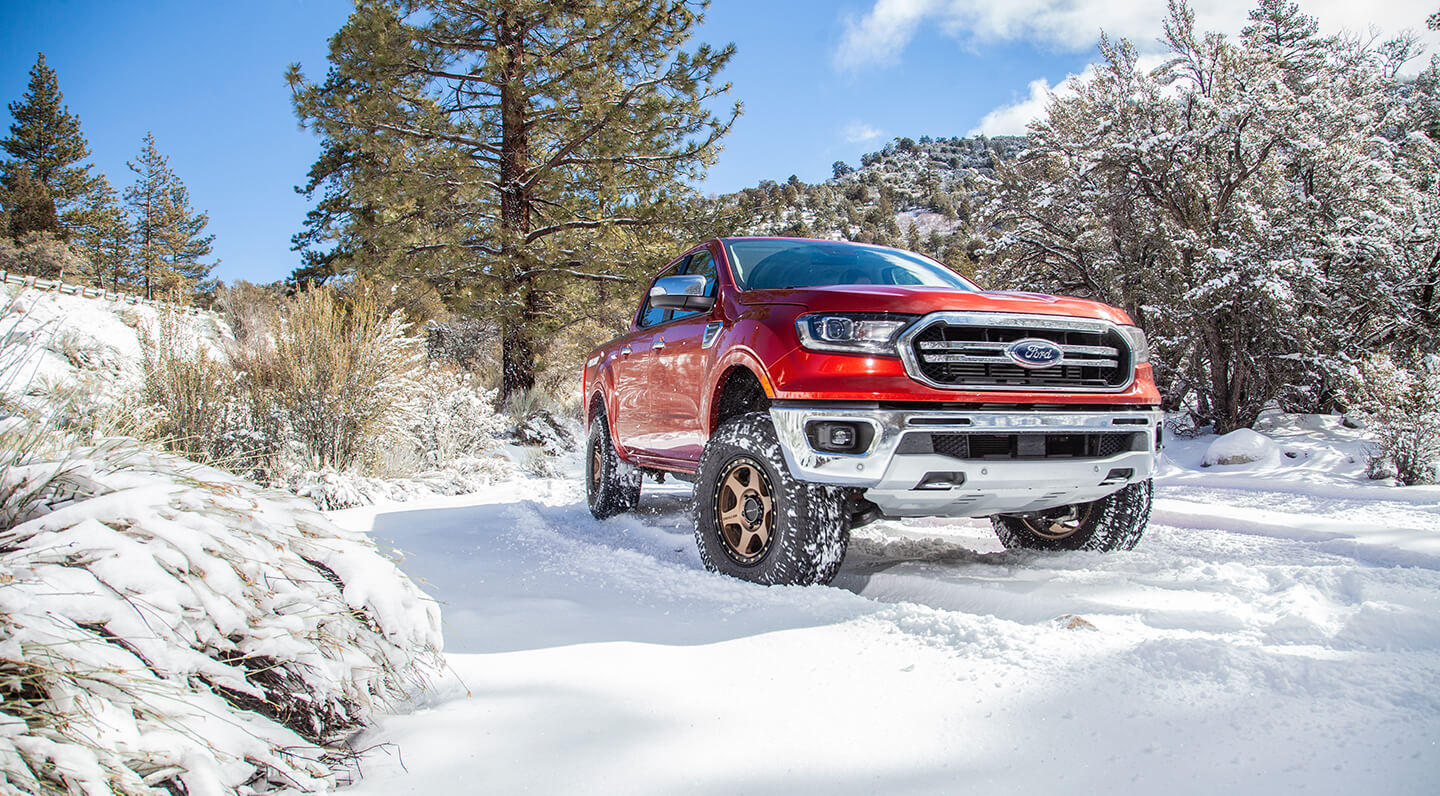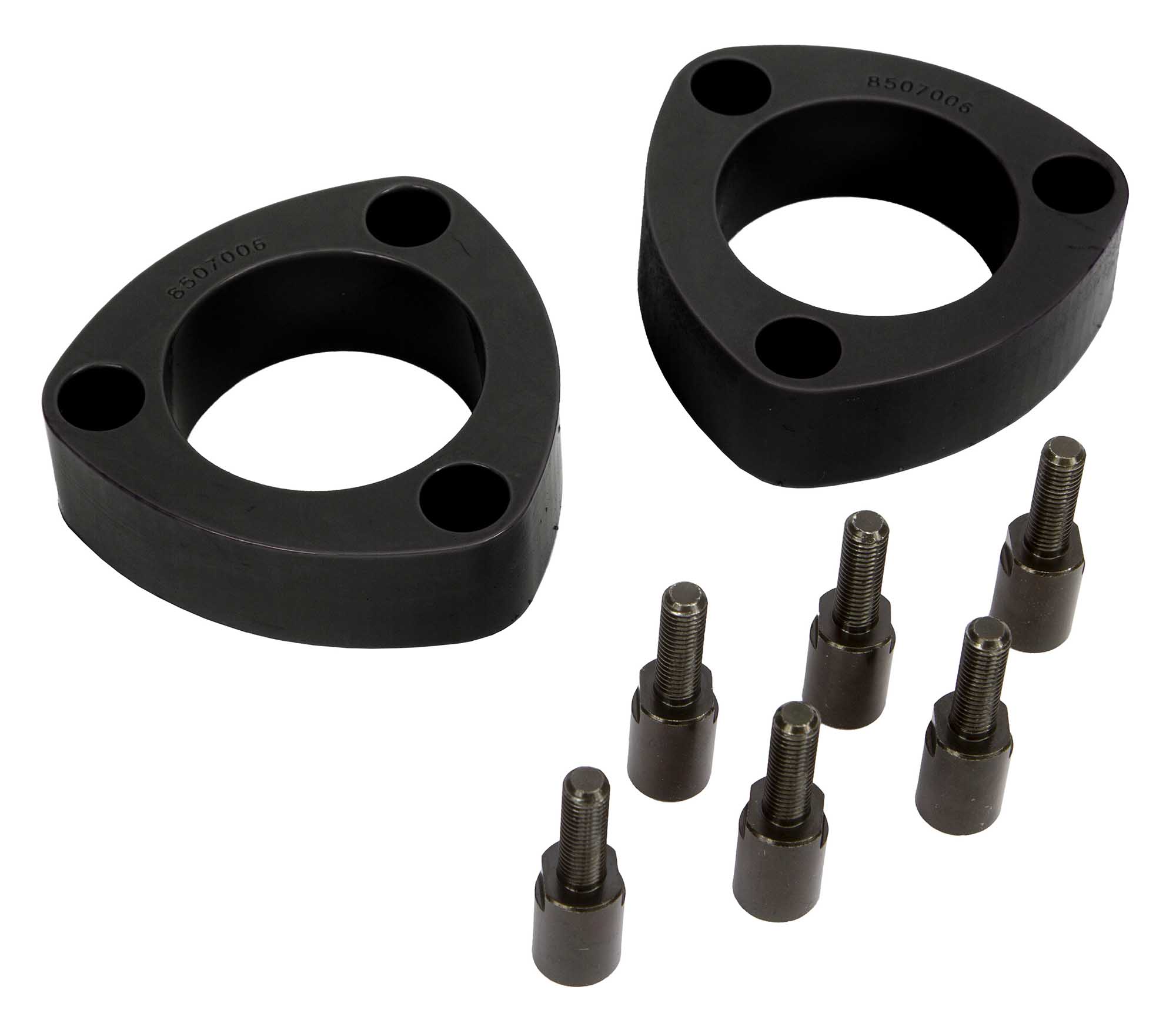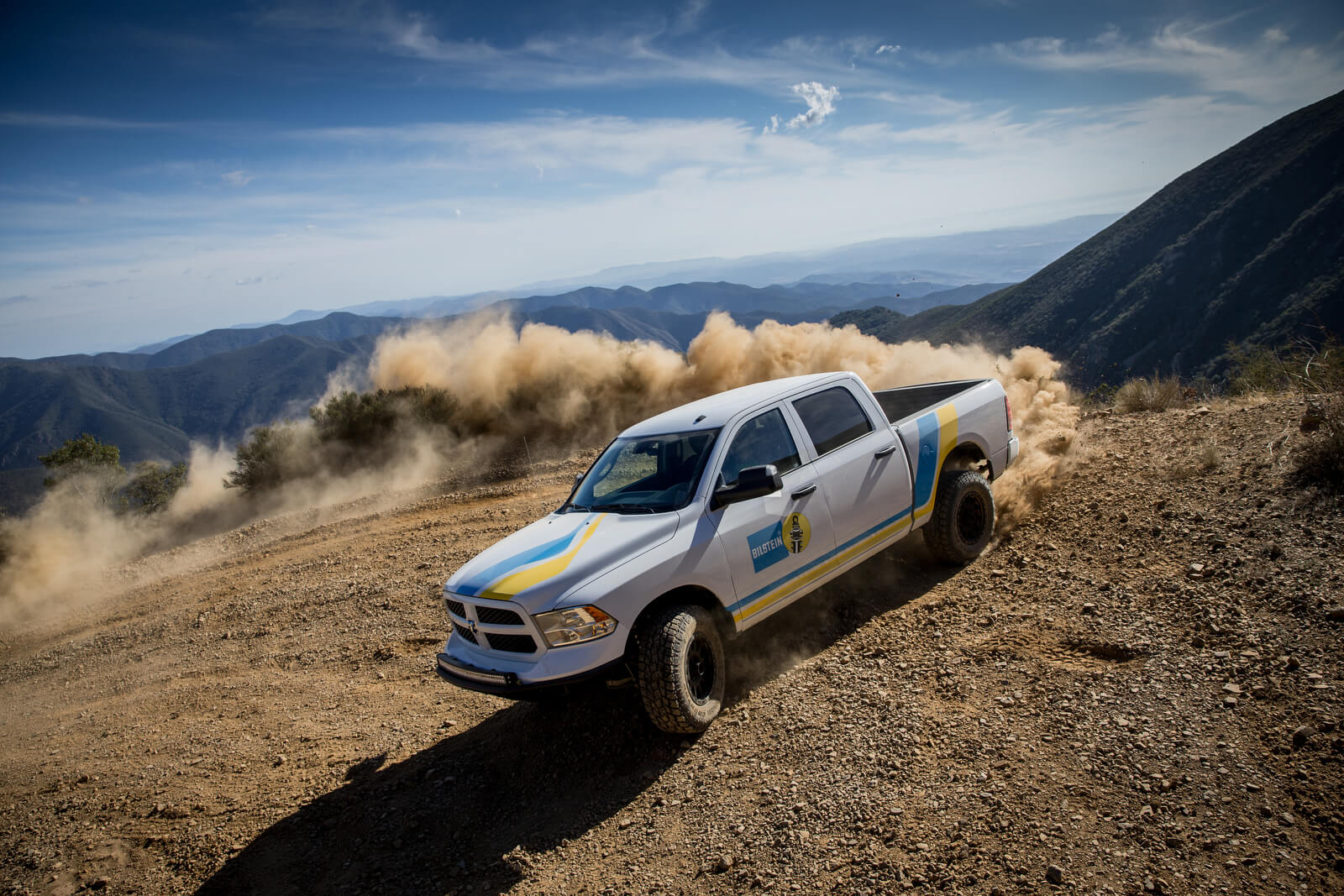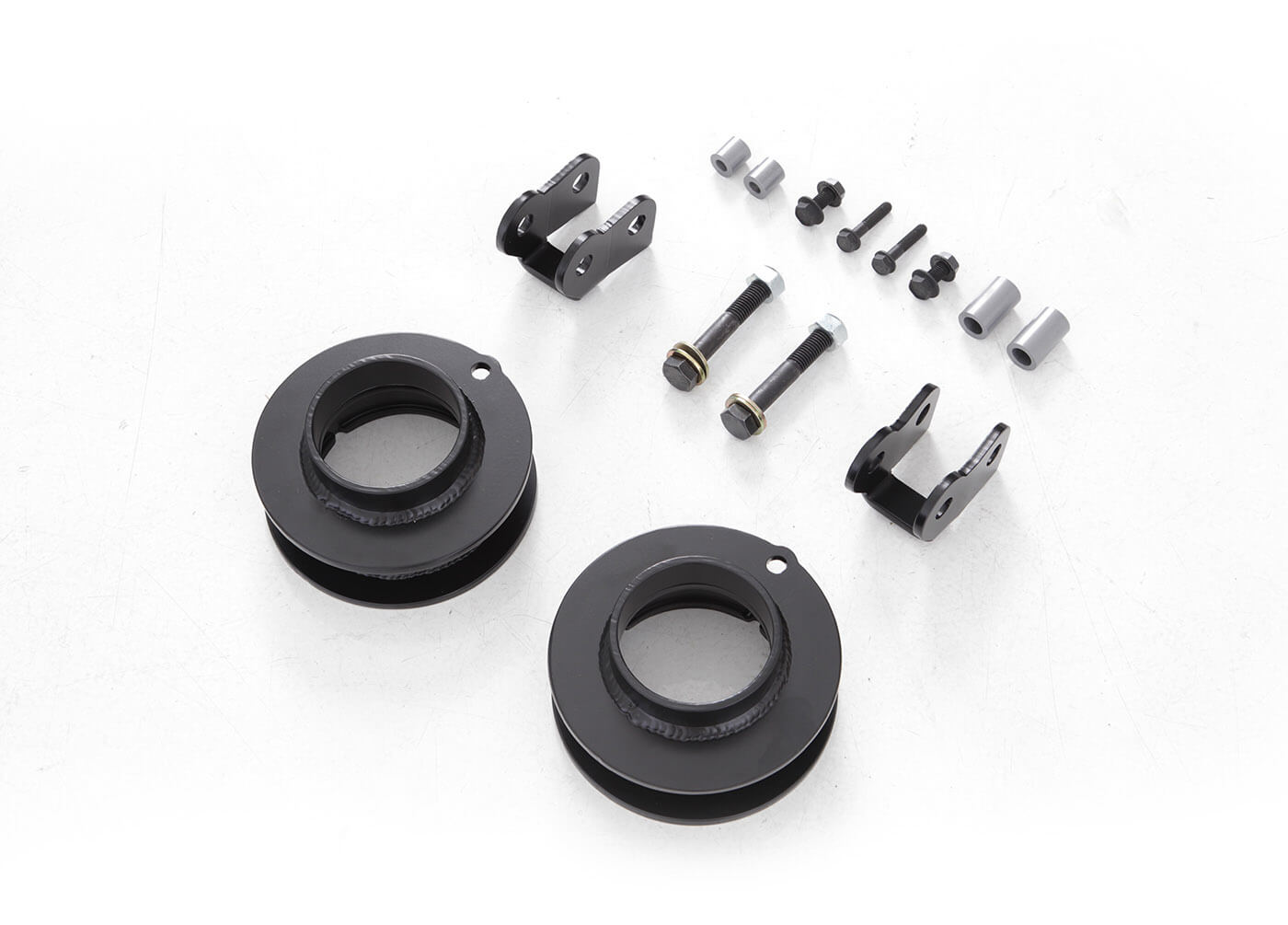
Top 10 Suspension Leveling Kit Questions Answered
Aftermarket leveling kits are the most popular suspension upgrade made to 4x4s today, and rightfully so. They are a simple, inexpensive, and easily reversed modification that can improve the looks and performance of your 4×4. If you’re like most 4×4 enthusiasts, you probably can’t stand leaving anything alone. Driving a completely stock 4×4 seems unthinkable. But you likely don’t want to significantly alter the smooth factory ride of your daily-driver or decrease its handling, performance, and reliability. A leveling kit is perfect if this sounds like you.
Stock 4x4s almost always have a raked stance. The OE vehicle manufacturers purposely bring down the front end of a 4×4 to create more of a wedge silhouette. The nose-down attitude helps decrease vehicle wind resistance increasing fuel economy. Leveling kits are designed to level out the uneven stance and increase the ground clearance of your 4×4. In most cases, the slight lift will allow for bigger tires. When coupled with high-quality aftermarket shocks, a leveling kit can increase on- and off-road handling too. With all these great benefits, it’s easy to see why leveling kits are so popular. With greater mainstream popularity comes questions. We’ve compiled the most common questions and the answers for those looking into adding a suspension leveling kit to their 4×4.

Suspension leveling kits are significantly less expensive than full lift kits because they require fewer parts. The most basic leveling kits, such as this Daystar kit for a 2015-18 Chevy Colorado and GMC Canyon is little more than a pair of spacers and some hardware.
Why Are Leveling Kits So Inexpensive?
Leveling kits are significantly less expensive than a lift kit for several reasons. The most important reason is that there are just fewer parts needed to level the suspension compared to the parts required to lift a vehicle 3 or more inches. Complete lift kits and systems often require a horde of dropdown brackets and other components to allow the steering and drivetrain of a 4×4 to function correctly. The least expensive leveling kits usually don’t alter the wheel travel. They simply set the ride height of the 4×4 a little higher.
Should I Just Get The Cheapest Leveling Kit?
You could ask this same question of many things. Should you purchase the cheapest tires, airplane, parachute, or engagement ring? While some of these things could be life-threatening, choosing the right leveling kit will depend on how you plan to use your 4×4. As with anything, you get what you pay for. If you simply want to roll around on the street in a 4×4 with a level stance, then the least expensive leveling kits will do a fine job. If off-road performance and handling are important, you’ll likely want a slightly more complex and costly leveling kit.

The amount of lift a leveling kit offers will typically depend on the vehicle being leveled. Some 4x4s need more front lift than others to sit level. Some leveling kits are even adjustable so you can tune the suspension to the ride height you prefer.
How Much Lift Will A Leveling Kit Provide?
The amount of lift a leveling kit provides is typically dictated by the vehicle model that is being leveled. Different vehicle models have different amounts of rake in the stance. Some 4x4s require slightly more lift than others to get a level stance. Most leveling kits provide 1-2.5 inches of lift. If you have a specific tire size and lift height in mind, then a leveling kit may not be for you. If this is the case, you may want to consider a full lift system.
How Big Of A Tire Can I Fit With A Leveling Kit?
With most leveling kits only offering 1-2.5 inches of lift, your tire size options are limited. Generally, you should be able to fit a tire that is one to two sizes larger than stock. Some applications may allow a tire that is up to three or four sizes larger than stock. How you use the vehicle, the amount of tire rub you can live with, and the fender trimming you are willing to make will dictate the largest tire size possible. For example, a street driven 4×4 may never see tire rub with a leveling kit and given tire size. That same set up could have mind-numbing tire rub off-road when the sway bars are disconnected and the suspension is articulated. Most leveling kit manufacturers offer tire size guidelines and some even provide wheel backspacing recommendations.

Upgrading the shocks on your 4×4 will improve off-road performance. Some leveling kits utilize new performance shocks as part of the kit. If your stock shocks are worn out and you plan to drive like this, they should be replaced when you install a suspension leveling kit.
Do I Need New Shocks?
Not all leveling kits require new shocks. The least expensive kits often retain the factory shocks. However, if your original shocks have 20,000 or more miles on them, you plan to take the vehicle off-road, or if you drive aggressively, you should consider new shocks mandatory with the installation of a suspension leveling kit. Some high-end leveling kits include performance shocks, which will help control the heavier, larger diameter tires over rough surfaces. Leveling kits for some applications may require bump stop relocation to keep the stock shocks from bottoming out and damaging themselves. This is a common problem with the use of spacers on the factory front struts on some Toyota 4x4s.
Can I Use Shock Extenders With My Leveling Kit?
If your factory shocks are not worn and you plan to spend most of your time on the street, or your vehicle already has better than stock shocks, you may be able to retain them with the use of shock extenders. Shock extenders are not available for all applications, but they can be used to save a bit of coin if you are on a tight budget. Some low-cost leveling kits include shock extenders and are available with optional shocks. If you choose to go with the extenders, you can always upgrade to better shocks down the road as your budget permits.
Most leveling kits do not include parts for the rear suspension. However, some leveling kits include high-end shocks for the front and rear. Larger diameter shocks with reservoirs help control suspension movement and better dissipate heat when driving aggressively off-road.
Will My 4×4 Need An Alignment After Installation Of A Leveling Kit?
Yes, your 4×4 will need an alignment after the installation of a leveling kit. All IFS 4x4s will need a full alignment, while solid-axle 4x4s can typically get by with centering the steering wheel via the draglink adjustment. Some solid-axle 4x4s will also require caster adjustment for proper handling and road manners. Many leveling kits include the components to do this. Failing to perform a proper alignment will cause poor handling characteristics and lead to premature wear of the tires.
Do I Need To Lift The Rear Too?
More advanced leveling kits do come with components to alter the rear suspension for improved performance, but most do not. Lifting the rear suspension would sort of defeat the purpose of a leveling kit. Leveling kits that are designed to improve off-road performance will typically come with high-quality front and rear shocks. These shocks may have reservoirs to help dissipate heat and may even come with external adjustment knobs so that they can be tuned to your preferred ride, regardless of the terrain.

Are Polyurethane Coil Spacers Better Than Steel Or Aluminum?
When it comes to coil spacers, there really isn’t one material that works better than another for spacing the coil away from the frame to level out the vehicle stance. However, it could be argued that polyurethane spacers will help to slightly deaden chassis noise caused by rough roads and washboard trails. The slight amount of flex allowed by the polyurethane may be enough to absorb some of the harshness an aluminum or steel coil spacer would transmit to the frame and 4×4 cab. Generally, the factory rubber coil isolator does this job, regardless of if you have spacers or not. The harshness difference between steel, aluminum, and polyurethane coil spacers is negligible. As for durability, it’s hard to deny that polyurethane is impervious to all automotive fluids and common road chemicals, where a steel or aluminum spacer might corrode.
Can I Install A Leveling Kit At Home?
Of all the types of lift kits available, a leveling kit would typically be one of the simplest to install at home. The ability to install a leveling kit in your own driveway will ultimately depend on your wrenching abilities. Some 4x4s with independent front suspension can require more complex installations. Many only utilize a simple spacer between the front suspension struts and vehicle frame. In this case, installing a leveling kit on an IFS 4×4 wouldn’t be much different than performing the same job on a much simpler solid axle front suspension. Most leveling kit installations will require a variety of common hand tools, a good floor jack, and sturdy jack stands. Don’t forget to make an appointment at the alignment shop when you’re done. If it is too much for you, or you want to spend less time swearing in your driveway, your local 4 Wheel Parts store can easily knock it out.



2